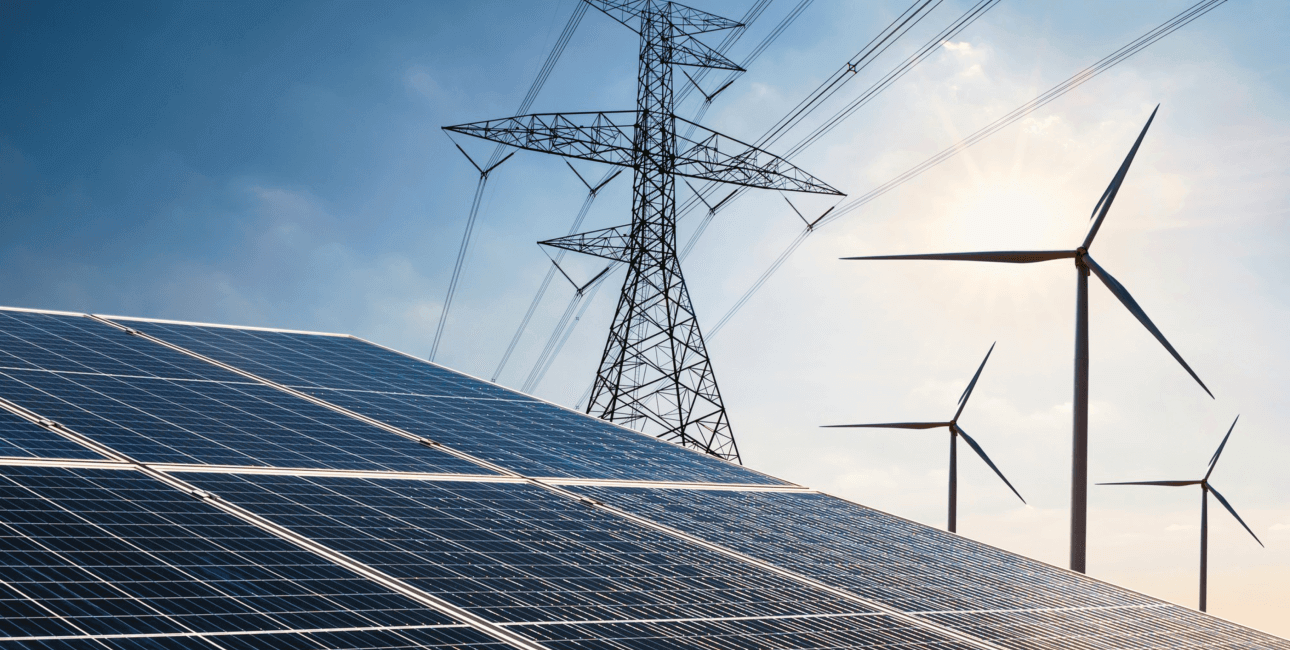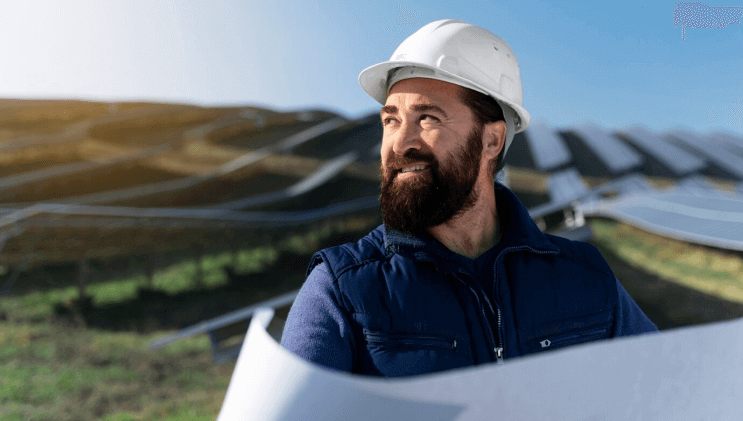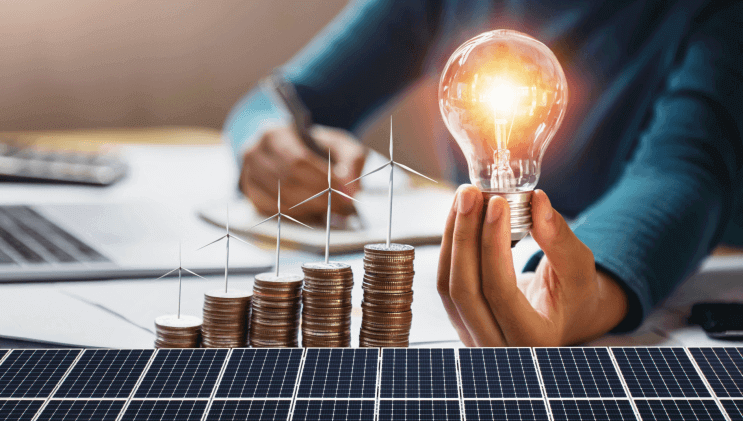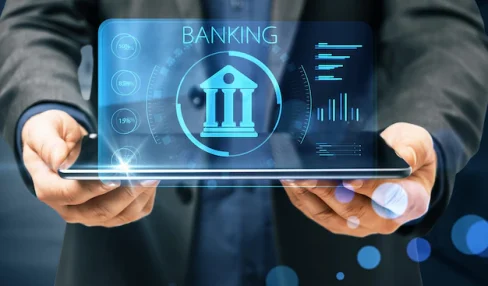Securing A DOE Loan: Where To Start
23 February 2024
6 Mins Read

toc impalement
The Department of Energy (DOE) has operated a loan program since 2005 that’s designed for the development and adoption of clean energy technologies. This is an excellent opportunity for eligible companies seeking funding for energy-related projects.
However, competing for and securing a DOE loan requires an understanding on where and how to start. Securing a desirable DOE loan requires extensive preparations, including understanding funding priorities and terms and nailing persuasive proposals.
Here is a starting guide to set the stage for DOE loan approval.
Get To Know DOE Leadership

Making connections with key DOE loan program decision-makers long before submitting an application boosts the odds of success. Meet leaders at industry conferences, invite them to tour facilities, and engage Congressional reps to make connections. Relationship building establishes credibility, lending a deeper understanding of vision and objectives when crafting proposals.
Assess DOE Loan Eligibility
Not all clean tech projects or companies automatically qualify for DOE loans. Rigorous eligibility rules apply under Title XVII, covering innovativeness, technical viability, and avoidance of credit subsidy (interest rates set to cover expected risk).
Before applying, you should determine if your proprietary technology, project concept, or product aligns with DOE priorities. Is your initiative around carbon pollution reduction, improving domestic energy production, or increasing vehicle fuel economy for eligibility?
For example, in January 2010, the DOE saved Tesla from bankruptcy and offered it a USD 465M DOE loan to develop a model designed to reduce the carbon footprint. Using the funding, Tesla’s model created 1500 jobs and prevented 52,000 metric tons of carbon dioxide emissions.
If you need more clarification about your current area of focus, consult published technology roadmaps.
Closely Track Funding Announcements
DOE posts funding opportunity announcements regarding impending loan availability through the Loan Programs Office (LPO). Announcements outline ideal projects, eligibility parameters, risk appetite, application procedures, and investment priorities given budget scenarios.
Assemble Partners Early
Private enterprises seeking DOE loans should realize the public sector evaluates risk differently. There is an emphasis on priorities like domestic job creation, expanded clean energy supply chains, and more value for taxpayers through loans.
Having research institutions, specialized contractors, equipment vendors, etc., as partners in applications de-risk value delivery.
Model Financial Structures Thoroughly
Convincingly demonstrating a project’s long-run technical merits and profit generation ability proves paramount to securing DOE financing. Applicants need extensive financial modeling projecting construction costs.

These costs include operating expenses, debt servicing capability, and future cash flows across plausible market scenarios. Models validating eventual revenue generation sufficient to repay government liens get heavy scrutiny.
Many past unsuccessful DOE loan applicants had poor financial structuring projections. They failed on asset valuations, debt service coverage ratios, and future cash flows. Additionally, they needed more equity investments. Starting early on financial modeling allows time to stress-test assumptions before applying.
Know the Pros and Cons of Title XVII vs. ATVM
DOE currently manages two major project financing facilities: Title XVII loan guarantees and Section 136 direct loans from the Advanced Technology Vehicles Manufacturing (ATVM) loan program.
Each option differs significantly in eligible projects, financial risk factors, and loan loss protections offered. Modeling out which pathway fits proposed technology solutions determines how you frame your applications.
Familiarize Yourself with DOE Loan Programs
Several DOE loan programs with distinct purposes and requirements fall under the DOE’s loan platform. The Innovative Clean Energy Loans promote early commercial use of cutting-edge technologies. The eligibility criteria for the Innovative Clean Energy Loans program is:
- The project must be based in the United States.
- It should reduce, or avoid emissions of air pollutants or greenhouse gases. LPO conducts a independent greenhouse gas life cycle analysis to decide eligibility under this criteria and to ensure that the project is a significant improvement compared to other ‘business-as-usual’ projects.
- The project should engage a technology which is either new or significantly improved compared to commercial technology that is already being used in other projects in the United States in the same field.
- There should be a reasonable potential for repayment of the loan.
Advanced Technology Vehicle Loans catalyze the production of more efficient vehicles and components. Tribal Energy Loans support native community energy development.
The eligibility criteria for Advanced Technology Vehicle (ATV) Loans are:
- The project should be based in the USA.
- To qualify for an ATV loan, the project must produce a vehicle that is either a passenger automobile or a light truck or both. These vehicles also need to meet the fuel emission standards mentioned in clauses 1&2 of document 10 CFR 611.2.
- It can also be an ‘ultra efficient vehicle’ that can carry two adult passengers and reach upto 75 miles per gallon while running as
- Fully electric vehicle
- hybrid electric-gasoline or electric-diesel vehicle
- diesel or gasoline vehicle
The Loan Programs Office website details the parameters of each to ascertain which suits a project. Requirements around cost-sharing, technical milestones, and asset security vary.
Know About The DOE Loan Application Process

Along with familiarizing yourself with the DOE loan programs, you should also know about the loan application process:
Step 1: Review the eligibility requirements and guidance documents for the specific loan program you are interested in. LPO has four loan programs: Title 17 Clean Energy Financing, the Advanced Technology Vehicles Manufacturing (ATVM) Loan Program, Tribal Energy Financing Program, and Carbon Dioxide Transportation Infrastructure.
Step 2: Request a pre-application consultation with LPO (optional, but highly recommended). This is a no-fee, no-commitment service that allows you to discuss your proposed project and learn about LPO’s process and expectations before formally applying.
Step 3: Develop and submit a part I application with enough information for LPO to determine whether your project is eligible and ready to proceed to a part II application. The part I application fee is $50,000 for most projects, except for tribal energy projects, which have a reduced fee of $25,000.
Step 4: If invited by LPO, submit a part II application with more detailed information about the technical, financial, legal, and environmental aspects of your project. The part II application fee is $350,000 for most projects, except for tribal energy projects, which have a reduced fee of $100,000.
Step 5: Y9ur project will undergo a rigorous due diligence process by LPO and its third-party advisors, which may include site visits, interviews, document reviews, and negotiations. This process may take up to a year or more, depending on the complexity and readiness of your project.
Step 6: If approved by LPO and the Secretary of Energy, you will receive a conditional commitment for a loan or loan guarantee, subject to the availability of funds and the satisfaction of all terms and conditions. You should note that the conditional commitment is not a guarantee of a loan, and it may be withdrawn or modified at any time.
Step 7: Finalize and document the ownership and contract structure of your project, secure all necessary permits and approvals, and meet all other closing conditions specified by LPO.
Tell A Compelling Story
Ford Company received $ 9.2 billion from the DOE to construct electric vehicle battery factories. Competing with such giants to win DOE loans relies upon your storytelling prowess in convincing evaluators why your projects merit investment.
You can do this by quantifying market problems, then depicting how you can substantially improve outcomes. In addition, you should demonstrate deep market expertise and convey a commitment to the public good. Make sure to tand out through compelling narratives aligned to DOE scoring factors.
Get That DOE Loan
While intimidating, billions in low-cost, flexible capital for launching transformational projects await through sophisticated DOE loan vehicles. Yet securing support necessitates consulting experts, building relationships with agency dealmakers, and crafting truly persuasive applications, among others. Follow these steps, and yours can be the next success story after Tesla!
READ MORE:


















Comments Are Closed For This Article